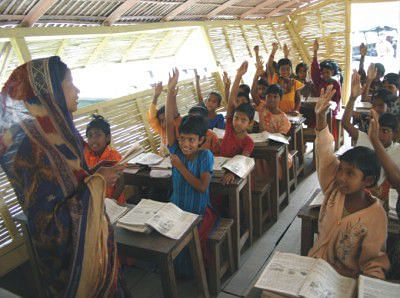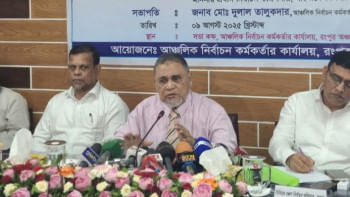Participatory way of learning

It is difficult to bring innovations in a complicated area like teaching and learning and it is harder to implement them. Both the teachers and the students develop a particular pattern of teaching and learning respectively over a long period of time. Neither the teachers nor the students are always mentally ready to take on new methods and techniques. Most probably, the reason is that they are not used to applying these methods in the classrooms; or they are not sure about the success of the new methods and techniques; or they do not have any interest in them.
However, in order to make a positive change in our education system, we have to follow the new teaching-learning method which is thought to be more effective. Participatory approach in education is one of the most popular approaches of the modern time. The users of this approach believe that knowledge is not something to be given to students; it is to be created through interactions. Teaching and learning is a two-way process where ideas of teachers as well as students are mingled together to form new knowledge. This is the basis of participatory approach.
The teaching-learning activities in which teachers and students take active part with each other is called participatory teaching-learning method. In this method teachers can create a co-operative learning atmosphere in which the students can get an opportunity for learning more actively. They can expose their creative skills and get a chance to express their opinions freely in the classroom. For example, if we apply participatory approach like pair work, group work, peer work, and individual work in the classroom, the students will be more active and sincere in their lesson and they will be able to exchange their ideas with each other as well as with their teachers. As a result, learning atmosphere will be more enjoyable and their learning will last long.
Participatory approach started in secondary schools in 2005, but it began before that time in the name of communicative language teaching (CLT). This CLT is actually participatory approach in which students have the opportunity to participate in different activities such as pair work, group work, peer work, role play, picture interpretation, expert jigsaw, audio-lingual, extensive reading, and aural-oral activities, skimming, scanning and so on. As a result, they can get a chance to display their creative power that helps to make them more confident, and they can remove their learning related fear.
Knowledge is socially constructed and, in fact, all of our learning is reconstructed on our past experiences. When we learn anything the new knowledge is amassed in our memory store. Development of knowledge depends on the quantity and quality of social interactions where surroundings and socio-economic status of the interacting partners influence the construction and reconstructions of knowledge.
From the above discussion it is clear that participatory approach is an effective method in education. However, the effectiveness of any method depends mainly on the classroom performances of the teachers. It does appear that whenever the techniques of the participatory approach are intelligently applied in the classroom, positive result is obvious. By using this method the students' understanding of a topic becomes direct and long lasting. Students can use the knowledge thus gathered to solve the problems they face in their personal and social life.
Although the government of Bangladesh has spent a huge amount of money through a project named TQI-SEP, many teachers at the secondary level have not yet been participatory. In some cases, they are just preaching knowledge instead of creating through dialogues in pair and group works, for example. It goes without saying that many methods have been developed in teaching, but none of them may be alone sufficient to teach well. Any method or combination of methods which produce good results with the pupils in our classes can be considered the right method but, of course, those must be ancillary to the participatory approach. Teachers are the managers of their classrooms as well as students' learning. Through participatory approach, all the students of a large class can be easily reached.
If we want to modernise our education system, our teachers and education administrators have to be proactive in implementing the new approaches. Education ministry as well as the National Curriculum and Textbook Board may help through giving proper instructions to the schools regarding the use of the participatory approach. The expertise of Government Teachers' Training Colleges can be exploited to bring the desired changes through achieving the aims and objectives of our secondary curriculum.

 For all latest news, follow The Daily Star's Google News channel.
For all latest news, follow The Daily Star's Google News channel. 



Comments